What’s It All About, Marty?
DIRECTED BY DELBERT MANN/1955
STREET DATE: JULY 19TH, 2022/KINO LORBER STUDIO CLASSICS
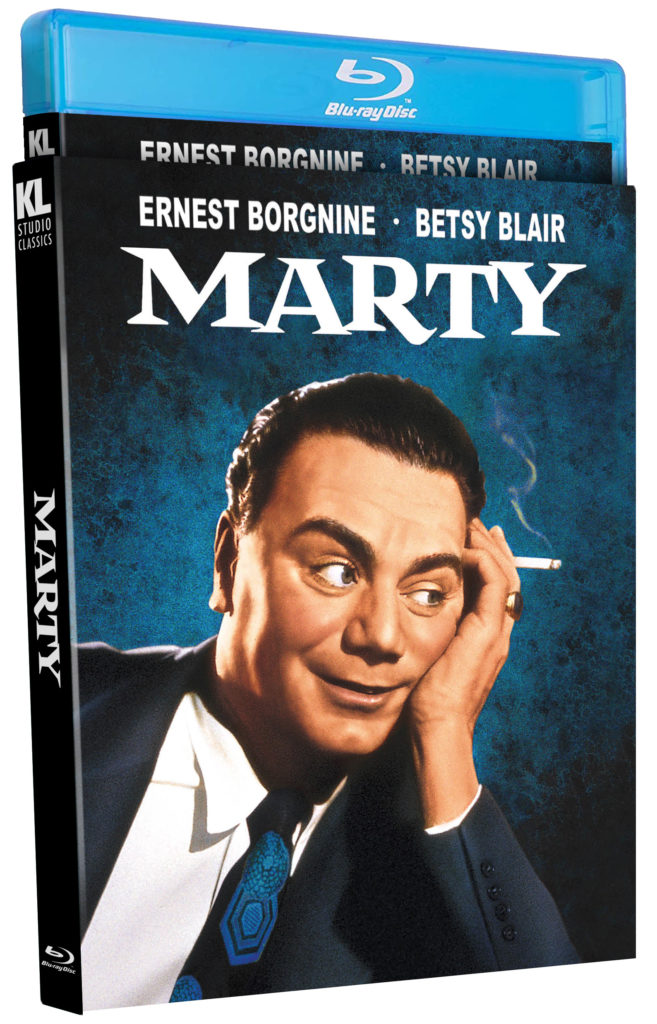
The 1955 winner of both the Best Picture Academy Award and the Cannes Film Festival Palme d’Or (the first year the latter prize was given) receives a deluxe Blu-ray release this July from “brand new 4K masters” by Kino Lorber Studio Classics.
Marty remains perhaps THE sleeper hit of the twentieth century, its modest budget and production, first-time feature director, absence of marquee-name stars, and smaller scale drama and characterizations – a story of everyday people in a recognizable setting – nevertheless striking the most resounding of chords imaginable with audiences around the world. Paddy Chayefsky adapted his legendary 1953 Philco Hour broadcast, retaining creative control with an associate producer credit, both opening up and tampering down some of the more raw and emotional moments from the original production. Less intense but more warm-hearted in its translation to the big screen, Marty similarly retains its considerable resonance with a relatable storyline, realistic personalities, and true-to-life milieu.
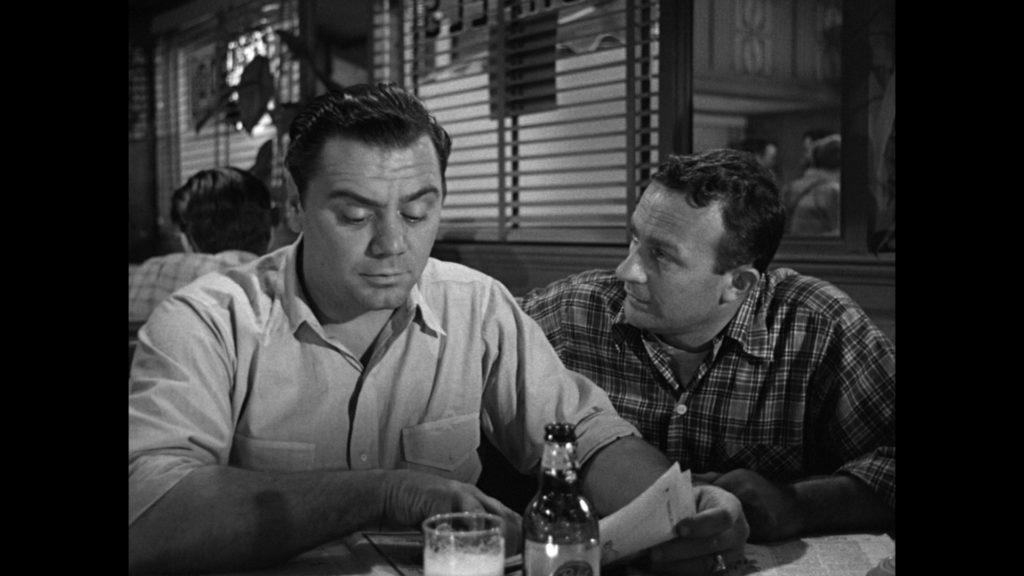
Marty Piletti (Ernest Borgnine) is a 34-year-old unmarried butcher living with his widowed, immigrant mother (Esther Minciotti) in an Italian neighborhood in the Bronx. Resigned to a lonely lifestyle of hanging out with Angie (Joe Mantell) and the boys on “stag” Saturday evenings, Marty, after a lifetime of rejection, encounters an equally lonely Brooklyn schoolteacher (Betsy Blair) at an otherwise depressing local dance hall. Marty, possibly for the first time in his life, opens up to the quiet, intelligent 29-year-old woman, herself no stranger to rejection, after a particularly cruel instance of social abandonment.
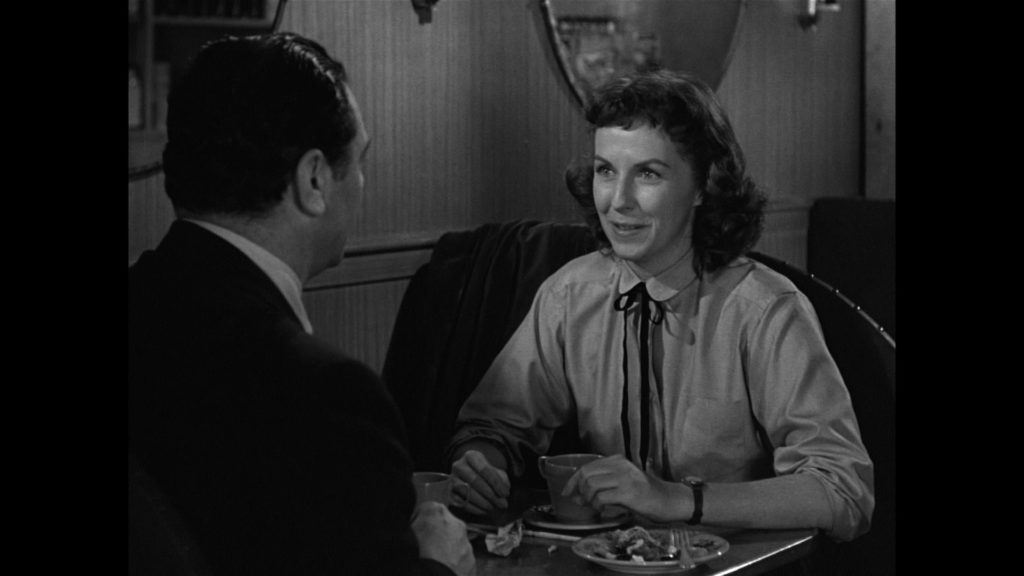
Bonding over their shared loneliness, the pair form an instant connection over five subsequent hours of street conversation into the early hours of the morning. The next day, however, facing the judgments of his mother, recently displaced aunt (Augusta Ciolli), and adolescent-minded buddies, Marty eventually overcomes these petty obstacles towards making the promised, delayed phone call that will possibly change his life thereafter.
The Sunday afternoon-to-Sunday evening drama of Marty, both story and title character, plays after 67 years like it could have happened last weekend. The Bronx location-shooting and seemingly off-the-street casting – Minciotti, Ciolli, and Mantell screen-effective holdovers from the original production – continues to invite audience identification with each dramatic and emotional turn, the situations and feelings expressed stretching far past a small Italian neighborhood in the 1950s. Both the aimless, carousing nature of Marty’s circle of friends – its famous non-rejoinder to “so whaddya wanna do tonight?” no closer to being answered in the several intervening decades – and the subplot of the querulous aunt coming to live with Marty and his mother – effectively dovetailing into Marty’s widowed mother’s conflicting worries over her sole remaining son growing alone into middle-age while also fearing losing him – imbue time-and-place with an immediacy that viewers will still recognize and sympathize with.
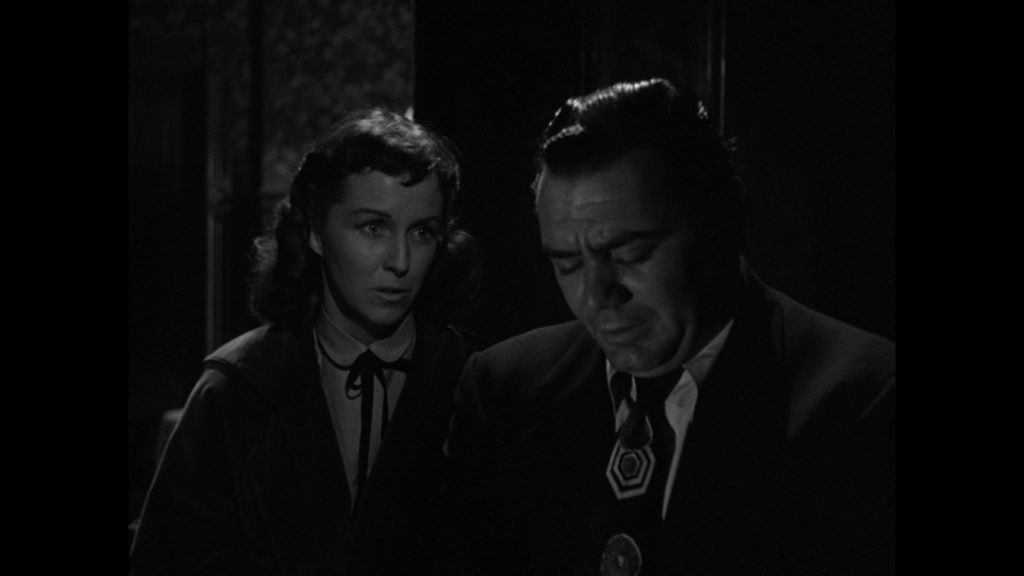
Replacing Rod Steiger and Nancy Marchand from the original production, Ernest Borgnine – then typecast in villainous roles such as the murderous sergeant in From Here to Eternity (1953) – and Betsy Blair – then married to Gene Kelly and coming off a period of greylisting for liberal political sympathies – bring a gentle, less wounded quality to the central relationship while evoking a palpable, moment-by-moment concern for their mutual emotional well-being. When Borgnine’s Marty unexpectedly leans in for a kiss at one point and is defensively rebuffed by Blair’s Clara, the two-shot on Borgnine’s anguished expression mid-ground and Blair’s conflicted features closer to the camera — like a photographic study or still-relief of deer frozen in an approaching car’s headlight — the fears, insecurities, and years of emotional pain of two perennially lonely, rejected people become alarmingly clear. Boy, do we want these two to get together; the least reason for which is that we would wish to spare them any such moment in their respective futures.
Produced by actor Burt Lancaster with his business partner Harold Hecht for their independent Hecht-Hill Company, Marty‘s modest and unassuming translation from a riveting 50-minute television play to an inherently likable 90-minute movie seems to extend from the best qualities of its central characters. As realized by Chayefsky’s organic expansion of the story, original broadcast director Delbert Mann’s actor-privileging set-ups and compositions, and a certain ineffable respect for rhythms of daily life – an alchemy of the film’s use of real Bronx locations alongside the naturalistic underplaying of the actors – Marty bears comparison and a certain resemblance to Italian Neorealism of the period.
Lancaster himself had just returned from Mexico shooting Vera Cruz (1954) with Gary Cooper for Hecht-Lancaster – among whose gang of villains in this colorful South-of-the-border Western was none other than Ernest Borgnine – and while the latter production indicates the operatic genre fare the Italian movie industry would move towards in the subsequent decade, the more immediate appeal by contrast of Marty for the actor-producer very well may have been the opportunity to lend his aegis to a considerably more grounded story populated with real faces of everyday people living only a few blocks from where he was born. (Lancaster says as much in the trailer he narrated and appeared in for Marty, which is included on Kino Lorber’s gallery of trailers accompanying the disc as a special feature.) For once, in a long career of playing tough cops, hard-bitten criminals, acrobatic swashbucklers, Western rough-riders, and grin-glinting adventurers, the commercial money derived from all that screen glamor made something within – or at least adjacent to – the Hollywood system closer to a personal statement on real people with real problems and feelings. That it could all still happen down the block from where you live, again, gives Marty its near three-quarter century staying power.
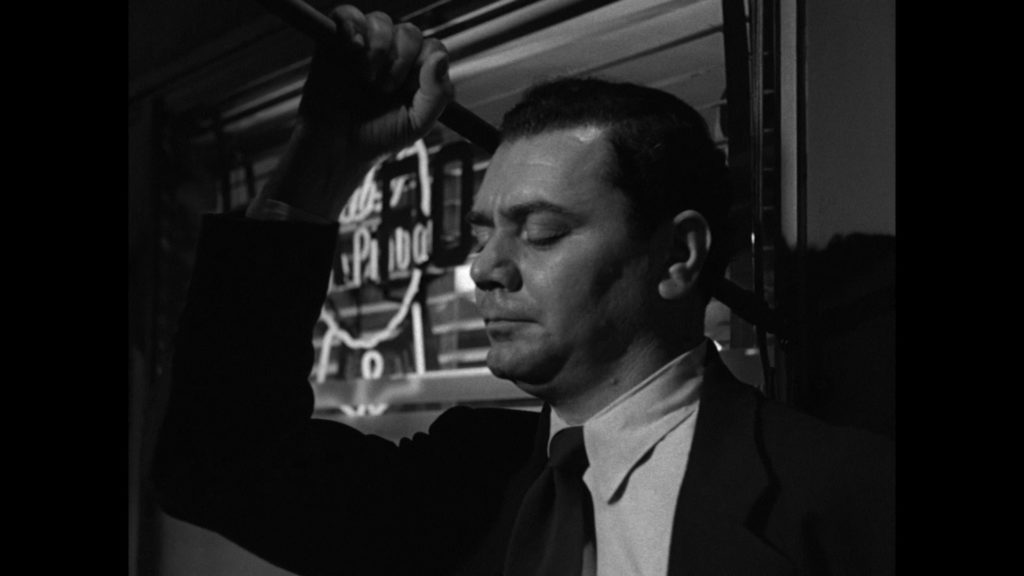
Kino Lorber’s slip-cover re-issue of Marty in this Special Edition Blu-ray visually shines in its new 4K master, offering viewers an interesting format choice between a 1:85:1 screen image or its more common home video presentation of the 1:33:1 academy ratio. (Like many films made/released during the 1953-1955 theatrical transition to wider screens, Marty was presumably exhibited in both formats. KL dutifully gives viewers a choice here between those wider or taller screen sizes.) The other feature of laudable note is a new commentary recorded by New York-based film journalists Bryan Reesman and Max Evry, who offer historical context, observations, and insights on topics ranging from the film version’s comparison to the original TV broadcast, to a frankly astonishing uncovering of the movie production’s genesis as a tax write-off for producer Harold Hecht(!), alongside a fairly persuasive case that this big screen Marty remains the best possible presentation of Chayefsky’s still resonant early material.
Regarding the latter, particularly with Reesman’s and Evry’s commentary-length discussion on Marty‘s dramatic deconstruction of what we might now call ‘toxic masculinity’, this viewer/listener couldn’t help thinking of Marty’s naturally kind and gentle qualities as standing in stark relief to his neighborhood buddies’ more casual (and then socially acceptable) cruelty, particularly towards women. Marty and Clara really connected on that fateful Saturday night-to- Sunday morning, and although they both may have had to endure a lifetime of pain, rejection, and loneliness to get to that moment, they have effectively dissolved those considerable barriers of sex, class, and solitude through a few hours of heartfelt talk. Once again, perhaps that’s a little of why Marty endures.
Images used in this review are credited to DVDBeaver and are taken from an earlier home video release. They are used only as a visual reference and are not representative of the image quality of Kino Lorber’s new Blu-ray release.

